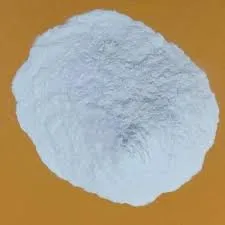
Dec . 11, 2024 11:36 Back to list
redispersible polymer
Understanding Redispersible Polymers Applications and Benefits
Redispersible polymer powders (RDPs) are a fascinating category of materials that have found widespread application in various industries, most notably in construction and coatings. These polymers are produced from the spray-drying of latex emulsions, which allows them to be stored as dry powders. When mixed with water, they form a stable dispersion again, making them incredibly versatile and user-friendly.
Composition and Properties
RDPs typically consist of a variety of polymer types including ethylene-vinyl acetate (EVA), styrene-acrylics, and polyvinyl acetate (PVAc). The choice of polymer significantly influences the final properties of the product, including flexibility, adhesion, and water resistance. When redispersible polymers are added to cement-based formulations, they enhance adhesion, improve flexibility, and increase water resistance, resulting in superior performance in construction applications.
One of the key features of RDPs is their ability to improve the workability of mortar and plaster mixes. When water is added, the RDPs rehydrate and form a continuous polymeric film, which enhances the binding properties of the mixture. This is especially beneficial in applications such as tile adhesives, repair mortars, and external insulation finishing systems (EIFS), where superior adhesion and flexibility are critical.
Applications in Construction
In the construction industry, RDPs are commonly used in a variety of products such as dry-mix mortars, tile adhesives, and combination coatings. For example, in tile adhesives, RDPs improve the initial tack and final bond strength, ensuring that tiles stay securely in place even in demanding environments, like bathrooms and kitchens where humidity is a factor.
redispersible polymer

RDPs also help to maintain the durability of construction materials by providing water resistance. In regions prone to moisture or harsh weather conditions, cement-based products fortified with redispersible polymers significantly outperform conventional mixtures, reducing the risk of cracking and delamination.
Additionally, these materials contribute to enhancing the exterior thermal insulation systems (ETICS), providing not just improved thermal performance but also preventing moisture build-up that can lead to degradation over time. The use of RDPs in these applications supports the development of sustainable building practices by improving energy efficiency.
Advantages in Other Industries
Beyond construction, redispersible polymers find applications in the paints and coatings industry, where they are used to formulate high-performance and environmentally friendly products. Their ability to improve adhesion, reduce film formation times, and enhance flexibility makes RDPs valuable for creating durable and aesthetically pleasing finishes.
In the adhesive and sealant sector, RDPs are utilized to create products that require strong bonding properties while maintaining elasticity. This flexibility is vital in various applications, especially where components may experience movement or thermal expansion and contraction.
Conclusion
Redispersible polymer powders represent a significant advancement in material science, offering enhanced performance characteristics for a wide range of applications. Their ability to improve adhesion, flexibility, and durability makes them invaluable in construction, paints, coatings, and adhesives. As the demand for high-performance, sustainable materials continues to rise, RDPs are set to play an increasingly vital role in various industries, making them a key area of focus for manufacturers and researchers alike. By understanding and harnessing the unique properties of redispersible polymer powders, we can drive innovation and improve the quality of materials in our daily lives.
-
Unlocking the Benefits of HPMC Products: A Gateway to Versatile Applications
NewsAug.07,2025
-
Unleashing the Potential of HPMC Ashland: A Comprehensive Look
NewsAug.07,2025
-
Tile Bonding Cellulose: The Key to Superior Adhesion and Durability
NewsAug.07,2025
-
Hydroxypropyl Methylcellulose Powder: The Versatile Component in Modern Pharmaceuticals
NewsAug.07,2025
-
Hydroxyethyl Cellulose: The Versatile Solution for Various Industries
NewsAug.07,2025
-
Hydroxyethyl Cellulose (HEC): The Versatile Polymer for Various Applications
NewsAug.07,2025







